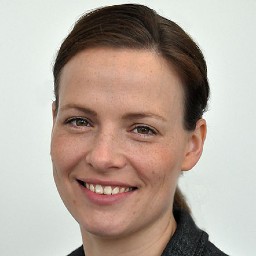Dr Maike Kittelmann
Senior Lecturer
School of Biological and Medical Sciences

Role
I am a Senior Lecturer in Cell and Developmental Biology in the School of Biological and Medical Sciences.
I teach undergraduate level 5 and 6 module Animal Developmental Biology and Animal Behaviour and Neurobiology and supervise master's and PhD students.
My lab is interested in the evolution and development of the nervous system, sensory organs and synaptic connections. We take advantage of the vast molecular and genetic toolkits available in model organisms like Drosophila and C. elegans to understand core principles and apply this knowledge in comparative studies to non-model organisms.
We use a variety of imaging techniques including confocal microscopy as well as high resolution 3D Serial Block Face SEM and TEM tomography or Synchrotron Radiation Tomography for ultrastructural analysis.
Teaching and supervision
Courses
Modules taught
- Nervous system and brain development
- Animal behaviour and Neurobiology
Supervision
My two current PhD student include Lewis Crockram (Active zone formation in C. elegans) and Lisa Moncrieff (temperature dependent eye development in Drosophila).
I also act as secondary supervisor for students with focus on developmental biology and bioimaging.
If you are interested to do a PhD project in my lab, please email maike.kittelmann@brookes.ac.uk for further information.
Research
Current Research projects:
1) Compound eye size and vision. Eye size directly impoacts insect vision. Here we use the fruit fly Drosophila as a model and collaborate with a range of researchers to help us integrate genetics, behaviour and mathematics to understand how this important sensory organ develops to species and sex specific size. We are also interested in thermal plasticity to understand how environmental factors influence sensory organ size.
2) Synapse formation and function. The morphology of the presynaptic active zone protein complex directlty affects vesicle fusion and therefore neurotransmitter release. We use the nematode C. elegans to understand which proteins are involved in the regulation and formation of the active zone dense projection and their function in motorneuron signal transmission.
3) Nervous system Evolution. In collaboration with Pawel Burkhardt at the Michael Sars Centre, Bergen, Norway we are investigating the structure and function of the unique syncytial ctenophore nerve net to understand how information is transmitted in one of the earliest branching metazoans.
Areas of expertise
- Electron microscopy (TEM, SEM and SBF-SEM)
- High Pressure Freezing and Freeze Substitution, microwave fixation)
- EM tomography
- Correlative microscopy and 3D reconstructions
- Synchrotron radiation microtomography
- Confocal microscopy
- Standard molecular biology techniques
If you are interested to do a PhD project or Master by Research project in my lab, please email maike.kittelmann@brookes.ac.uk for further information.
Groups
Projects as Principal Investigator, or Lead Academic if project is led by another Institution
- Access to facilities grant - Micro-CT phenotyping of whole flies following sleep deprivation (led by University of Bristol) (01/04/2025 - 30/09/2025), funded by: Science & Technology Facilities Council
- Access to facilities grant - Applications of multi-ROI or grid-scanning tomography to the study of distributed visual systems (led by Museum fur Naturkunde) (01/10/2024 - 30/04/2025), funded by: Science & Technology Facilities Council
- Access to facilities - "Coevolution and compensation in parallel visual systems: lessons from arthropod median and lateral eyes" (led by Museum fur Naturkunde) (01/04/2023 - 31/10/2023), funded by: Science & Technology Facilities Council
Publications
Professional information
Memberships of professional bodies
- Royal microscopy Society and European Microscopy Society
- British Society for Developmental Biology
- The Genetics Society
- British Neuroscience Association
- German Neuroscience Society
Further details
I studied Biology in the University of Goettingen, Germany where I obtained my Diploma. My thesis investigated the evolution of the nervous system and neurons using SNARE proteins as potential markers for neuronal anchestors in the early metazoan Trichoplax adhaerens.
During my PhD at the European Neuroscience Institute in Goettingen I used the model organism C. elegans to understand how synaptic transmission is regulated via the presynaptic density which is thought to be involved in vesicle tethering and recruitment to the presynaptic fusion site.
As post-doc I worked with Prof. Martin Goepfert to understand how mechanical stimuli lead to the opening of mechanosensory ion channels to generate an electric signal in the sensory neurons in Drosophila and identified ankyrin repeats of the mechanosensory ionchannel NOMPC as connection between the ion channel in the cell membrane and the microtubules.
I moved to Oxford in 2014 to join Prof Chris Hawes as a post-doc at Oxford Brookes University to use the state-of-the-art bioimaging facility and Serial-Block-Face SEM to investigate ER structure in 3D.
In 2018 I became a David Fell Research Fellow to start my own research group at Oxford Brookes University to study structure-function relationships in nervous systems and sensory organs.
